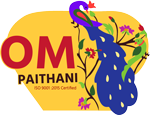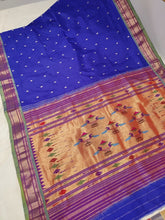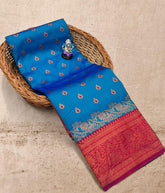A Paithani saree is a type of traditional Indian Pure Paithani sarees that began in Paithan, a city in Maharashtra, India. It’s famed for its exquisite artificer, rich colors, and beautiful designs. There are some details about Paithani sarees-
1. Fabric:
Paithani saree in Mumbai are generally made from fine silk. The silk used in Paithani sarees is of superior quality and gives the saree a luxurious look and feel.
2. Weaving fashion:
Paithani sarees are handwoven using a special weaving fashion known as” shade weaving” or” zari weaving.” It involves interweaving gold or tableware vestments( called zari) with silk to produce beautiful patterns and motifs.
3. Motifs and Designs:
Paithani sarees are known for their ornate and elaborate motifs inspired by nature, similar to peacocks, flowers, catcalls, and geometric patterns. The designs are traditionally woven using vibrant colors like peacock green, magenta, grandiloquent, unheroic, and gold.
4. Pallu:
The pallu( the ornamental end of the saree) of a Paithani saree is the most distinctive and elaborate part. It frequently features a large and intricately woven peacock design, known as” ,” which symbolizes beauty and grace.
5. Borders:
Paithani sarees generally have a broad border, known as a” patta,” which is adorned with intricate patterns and motifs. The border is generally woven in a different color to enhance its visual appeal.
6. Handwork:
Making Paithani sarees requires high skill and perfection. The zari work, which includes weaving metallic vestments, is done strictly by hand. The weaving process is time-consuming and labor- ferocious.
7. History:
Yeola Paithani sarees have a long history and symbolize wealth, status, and tradition. They were traditionally worn by kings and nobles in Maharashtra during special occasions, carnivals, and marriages.
8. Value:
Paithani sarees are largely prized and can be relatively precious due to their artificer and the quantum of labor involved in their creation. The finest Paithani silk sarees can take months or indeed time to weave, making them rare and precious.
9. Contemporary Adaptations:
While the traditional Original Paithani Sarees follows specific design conventions, contemporary acclimations may incorporate ultramodern rudiments, including emulsion designs, lighter fabrics, and innovative color combinations, to appeal to a wider range of preferences.
Paithani silk sarees in Mumbai aren’t just garments: they’re workshops of art that showcase the skill and artificer of the needlewomen. They continue to be cherished and worn by women across India and around the world for their fineness, beauty, and artistic significance.








